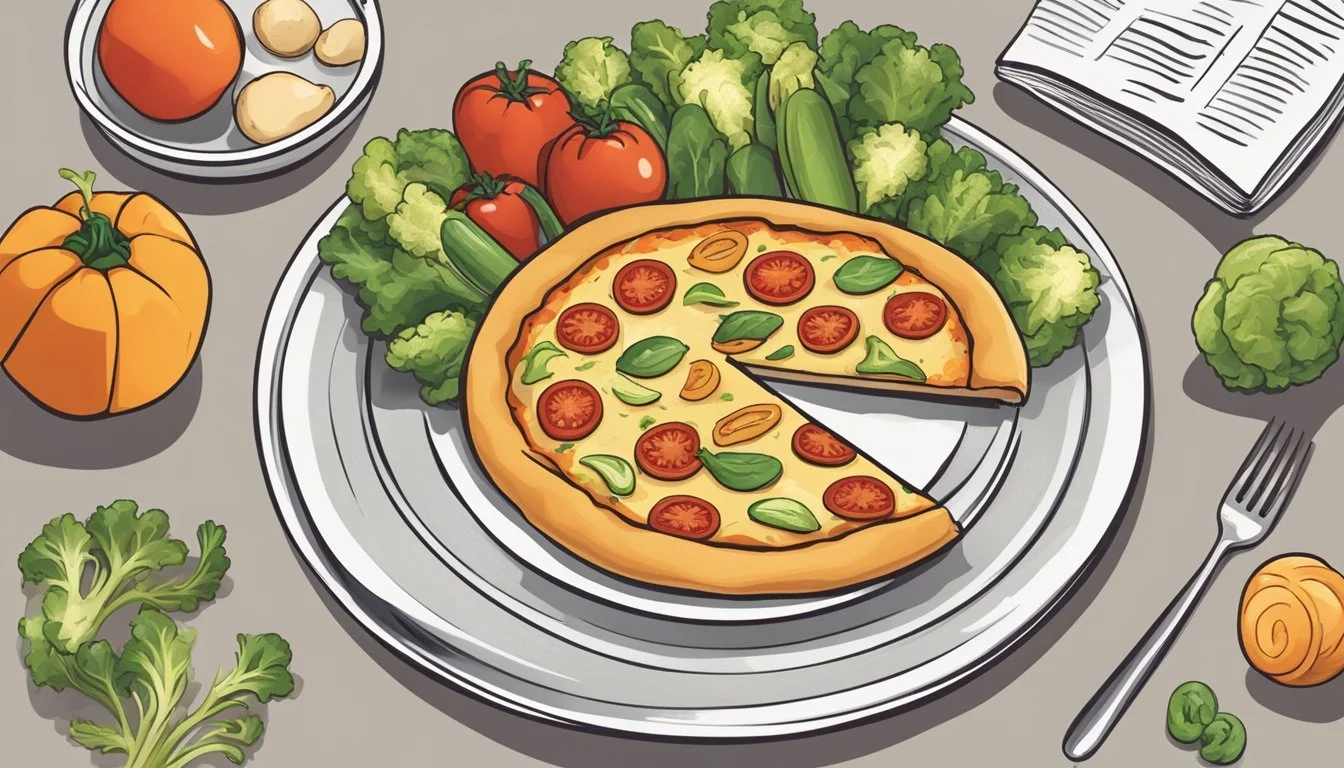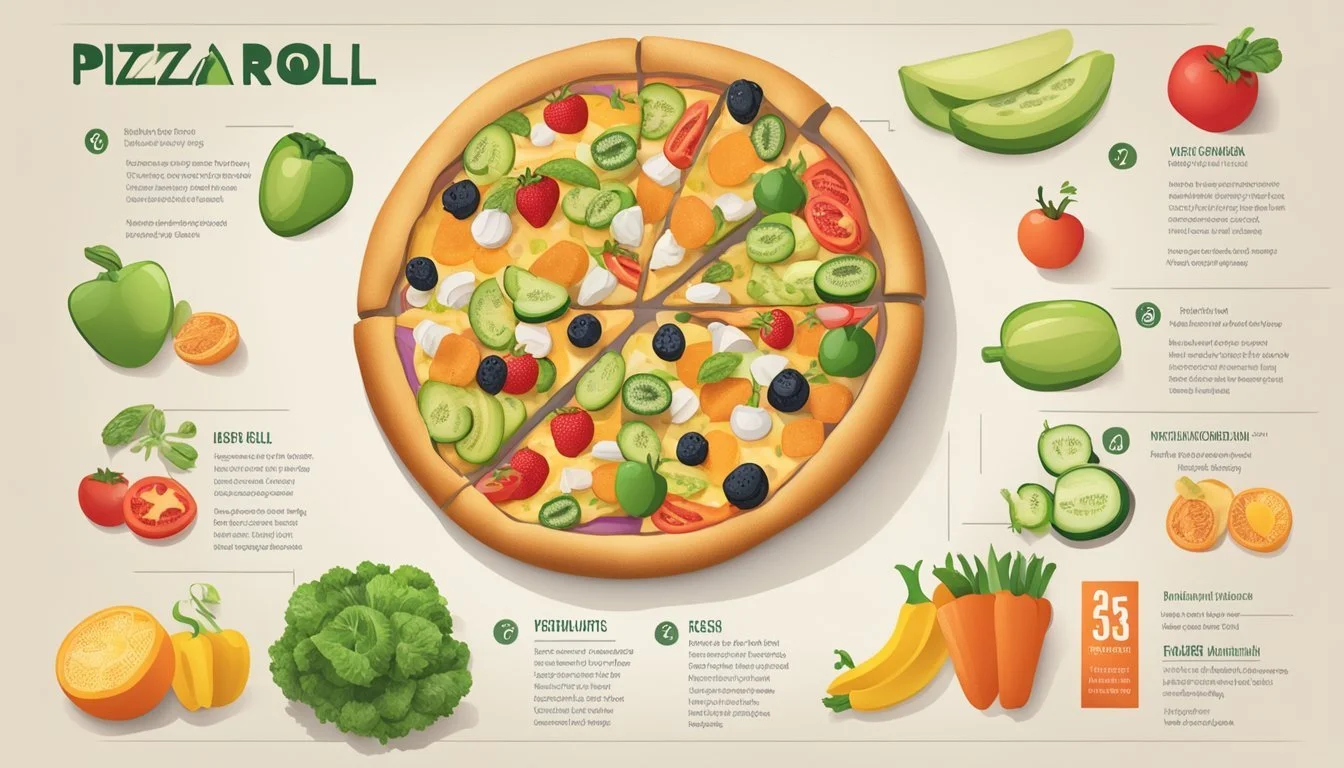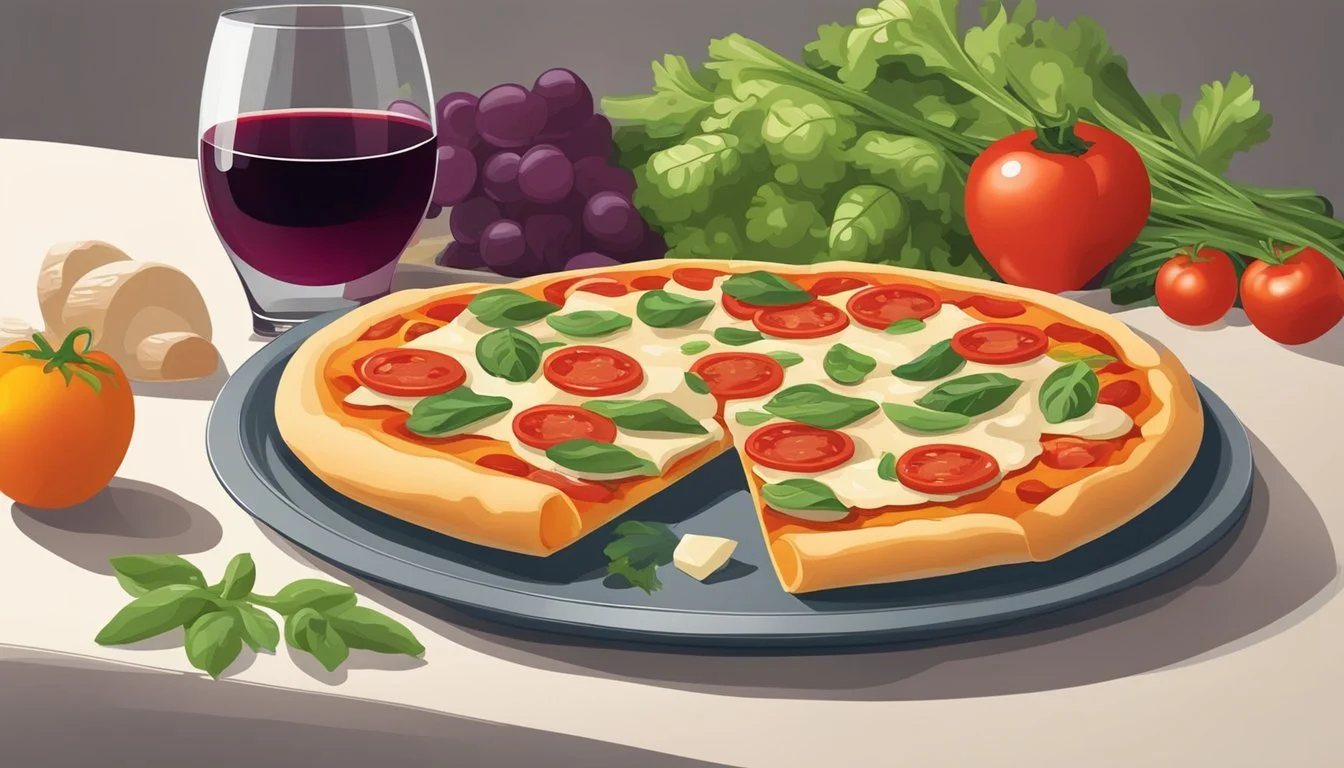Is Pizza Roll Vegan?
Uncovering the Truth About Your Favorite Snack
Pizza (What wine goes well with pizza?) rolls, a popular snack known for its convenience and cheesy filling, are traditionally made with ingredients that are not vegan-friendly. However, with the rise of plant-based diets, there has been a growing demand for vegan alternatives to classic comfort foods. There are vegan pizza roll options available in the market, and they cater to those adhering to a vegan lifestyle, ensuring that the ingredients do not include any animal products like meat, dairy, or eggs.
To make pizza rolls vegan, manufacturers and home cooks replace the conventional meat and cheese with plant-based substitutes. Vegan cheese made from nuts, soy, or other plant materials, along with meat substitutes or vegetables, are common vegan fillings. The dough is typically vegan as it is made from flour, water, yeast, and sometimes a sweetener. These vegan alternatives aim to mimic the flavor and texture of traditional pizza rolls while adhering to vegan standards.
Understanding Vegan Pizza Rolls
In a culinary landscape that includes an expansive variety of vegan alternatives, vegan pizza rolls emerge as a comfort food option for those adhering to a plant-based diet. They mirror traditional pizza rolls in appearance and taste but are made exclusively with ingredients that exclude animal products.
Defining 'Vegan'
Vegan ingredients encompass all foods that are not derived from animals. This includes the absence of meat, dairy, eggs, and honey. In the context of vegan pizza rolls, this means that the dough, cheese, and any toppings are plant-based. Vegan cheese used in pizza rolls can be made from a variety of sources such as nuts, soy, or root vegetables, which are designed to mimic the texture and flavor of traditional cheese.
What Are Pizza Rolls?
Pizza rolls are small, bite-sized pockets of dough that are stuffed with cheese, sauce, and often additional fillings, and then baked or fried. Vegan pizza rolls adhere to this definition with the caveat that all the ingredients used are vegan-friendly. The dough typically consists of flour, water, yeast, and salt, without any dairy or eggs that may be found in some traditional dough recipes. They can be homemade using a simple recipe or found pre-made at some stores.
Here is a typical ingredient list for homemade vegan pizza rolls:
Dough: Whole wheat or all-purpose flour, active dry yeast, water, and salt.
Filling: Vegan pizza sauce, vegan cheese (commercially bought or homemade), and optional vegetable toppings like bell peppers or mushrooms.
Seasonings: Herbs like oregano or basil for added flavor.
Ingredients for Vegan Pizza Rolls
Creating vegan pizza rolls calls for careful selection of plant-based components to ensure that each roll is both delicious and compliant with vegan dietary standards. The dough and filling can be homemade, utilizing fresh, whole food ingredients, or you may opt for convenience with store-bought alternatives where available.
Vegan Dough Ingredients
Key Ingredients:
Flour: All-purpose flour or gluten-free flour blends are suitable.
Yeast: Active dry yeast helps the dough rise.
Water: Warm water activates the yeast.
Salt: Enhances the dough's flavor.
Olive Oil: Adds richness and helps to create a tender crust.
Instructions:
Combine the flour, yeast, and salt in a large bowl.
Gradually add warm water and olive oil, mixing to a slightly sticky consistency.
Knead the dough until smooth, then let it rise.
Vegan Filling Choices
Vegans have a bounty of filling options, full of flavor and rich in nutrients.
Vegan Cheese: Choose dairy-free cheeses, such as vegan mozzarella or your preference of meltable vegan cheese. Vegetable Toppings:
Leafy Greens: Spinach or kale deliver a nutritious boost.
Olives: Both black and green olives add a briny depth.
Onions & Garlic: Provide aromatic foundations.
Bell Peppers: Sweet or spicy peppers add crunch and flavor.
Mushrooms & Zucchini: These add heartiness and texture.
Seasonings and Herbs:
Basil, Oregano & Sage: Fresh or dried to infuse Italian essence.
Salt: To taste.
Sauces:
Marinara or Pizza Sauce: Opt for a simple, robust tomato-based sauce.
Pesto: Basil or sun-dried tomato versions for a dynamic twist.
Instructions:
Layer vegan cheese and your choice of vegetables onto the dough.
Add herbs and spices to enhance flavors.
Spread a thin layer of sauce to prevent sogginess.
Homemade vs. Store-Bought Ingredients
When crafting vegan pizza rolls, one has the choice of preparing each element from scratch or taking advantage of the variety of store-bought alternatives for convenience.
Homemade Benefits:
Control over ingredients for those with specific dietary preferences, such as gluten-free requirements.
Ability to adjust flavors and nutrition, like increasing fiber with whole grain flours.
Store-Bought Convenience:
Time-saving options like pre-made vegan dough and pre-shredded vegan cheese.
The fusion of these ingredients forms the basis of vegan pizza rolls that are both enticing and satisfying, respecting the dietary choices without compromising on taste.
Preparation and Cooking
In crafting vegan pizza rolls, the cook needs to prepare homemade vegan dough, assemble ingredients neatly, and employ proper baking techniques to achieve a delicious snack with a golden crust.
Making Vegan Pizza Dough
For the vegan pizza dough, one starts by mixing whole grain flour, yeast, and a pinch of salt in a large bowl. Then, warm water is gradually added to the mixture, stirring continuously until a slightly sticky dough forms. The dough is then kneaded by hand to allow the yeast to activate and help the dough rise, which is an essential step to ensure a fluffy base after baking. The dough should rest until it doubles in size, creating the perfect texture for the pizza rolls.
Assembling Pizza Rolls
Once the dough is ready, it should be rolled out into a rectangle using a rolling pin. The next step is to spread tomato sauce over the dough, leaving an edge free of sauce to seal the rolls. Vegan cheese and other desired pizza toppings (What wine goes well with pizza toppings?) are spread evenly on top of the sauce. The cook must carefully roll the dough into a log, ensuring that it is not too loose or too tight. A sharp knife is then used to slice the log into individual rolls, each piece showcasing the layered filling.
Baking Techniques
The oven must be preheated to around 425°F (218°C). The cook should line a baking sheet with parchment paper to prevent the rolls from sticking. Each roll is placed on the baking sheet, with some space between them to allow for expansion as they bake. The pizza rolls are placed in the preheated oven and monitored until they turn golden in color, signaling they're baked perfectly. Depending on the oven and the size of the rolls, this process can take around 15-20 minutes. The result should be a satisfying, golden-brown snack with a crispy crust and a warm, savory filling.
Serving and Storage
Proper serving and storage are crucial for maintaining the quality of vegan pizza rolls. They ensure the rolls remain warm and delicious upon serving and fresh during storage.
How to Serve Pizza Rolls
Vegan pizza rolls are best served warm. One should heat them in an oven at a moderate temperature until they are heated through. This method helps retain their crisp exterior and ensures the filling is hot and flavorful. Serving immediately after reheating fosters an appetizing experience.
Storing for Freshness
For Short-Term Storage:
Allow the pizza rolls to cool to room temperature.
Store them in an airtight container.
Refrigerate for up to 3-4 days.
For Long-Term Storage:
Wrap the pizza rolls individually in cling film.
Place them in a sealed container or a freezer-safe bag.
They can be frozen for up to 3 months.
When ready to eat, one does not need to thaw the rolls; they can be reheated directly from the fridge or freezer to preserve their texture and taste.
Nutritional Information
When evaluating the nutritional content of vegan pizza rolls, one should consider several key components: calories, nutrition, fiber content, and overall healthiness. Vegan pizza rolls tend to have a varied caloric content that depends on the ingredients used. However, they often contain fewer calories than traditional pizza rolls due to the absence of cheese and meat, which are high in saturated fats.
Calories: A single vegan pizza roll can range approximately between 50-70 calories. The exact count is contingent on the size and the specific fillings included.
Nutritional Component Amount Calories 50-70 Fat Low Fiber Variable
Nutrition: They are a source of plant-based nutrition, offering vitamins and minerals that vary based on the vegetables, grains, and legumes used. For instance, if spinach or kale is an ingredient, the rolls would be enriched with iron and calcium.
Fiber: As vegan pizza rolls are often made with whole grains and legumes, they can be a good source of dietary fiber. Fiber is essential for healthy digestion and can promote satiety, which may aid in weight management.
In terms of healthiness, vegan pizza rolls might be considered healthier than their non-vegan counterparts due to the absence of animal fats and the presence of potentially lower levels of sodium. They can also be part of a balanced diet if consumed in moderation and paired with other nutritious foods. However, it's important to note that not all vegan products are automatically healthy; they can still contain high levels of sugar and processed ingredients. Therefore, consumers should inspect the nutritional label for information on the ingredients to make informed dietary choices.
Additional Tips and Tricks
In crafting vegan pizza rolls, attention to details such as the crust's texture, topping selection, and meal prep can significantly enhance the final product. Here are concise strategies for hitting the mark with each element.
Creating the Perfect Crust
Texture is key for the crust—it should be golden and slightly crispy on the outside, while maintaining a soft interior. Achieving this involves allowing the dough to rise properly before shaping. For a richer flavor, infuse the dough with Italian herbs and a touch of olive oil. To ensure a clean release from the baking sheet, one might consider using parchment paper or a silicone baking mat.
Mix-in suggestions: Add Italian herbs such as oregano or basil directly into the dough.
Baking tip: The crust is perfect when it’s a golden brown color, indicating it's been baked just right.
Finding the Right Toppings
Selecting plant-based toppings is a process that involves balancing flavors and textures. Aim for a variety of colors and nutrients by choosing vegetables like spinach, bell peppers, and mushrooms. For that cheesy experience, opt for high-quality vegan cheese that melts well. To ensure each bite is flavorful, one can sprinkle additional Italian herbs on top before baking.
Colorful veggies: Include a mix of red, green, and yellow toppings for visual appeal and nutrition.
Cheese alternative: Choose a vegan cheese that's known for melting well, such as those based on cashew nuts.
Making Pizza Rolls in Advance
For those aiming for easy and quick meals later on, pizza rolls can be made in advance and stored. Once assembled, the rolls can be frozen before baking. Place them separately on a baking sheet, freeze until firm, and then transfer to a freezer-safe bag or container. When ready to enjoy, one can bake them directly from frozen, adding a few minutes to the cooking time.
Freeze method: Line rolls on a sheet, freeze, then store in an airtight container.
Reheat instructions: Bake from frozen at the same temperature until heated through and enjoy.
Vegan Pizza Roll Variations
Vegan pizza rolls offer diverse flavors and adaptations to cater to various dietary requirements and personal tastes. They can be customized with different ingredients, such as gluten-free flours, an array of vegan cheeses, and exciting spices while incorporating elements like mushrooms and vegan pepperoni to enhance their flavor profile.
Gluten-Free Options
For those avoiding gluten, vegan pizza rolls can be easily adapted by using gluten-free flour blends in the dough. A mixture of rice flour, tapioca flour, and xanthan gum often works well to replicate the texture of traditional pizza dough.
Whole grain gluten-free flour: Enhances the fiber content.
Pre-made gluten-free dough: Ideal for convenience.
Mushrooms make an excellent topping due to their meaty texture, and they can be sliced and added to the gluten-free dough alongside a rich tomato sauce.
Alternative Vegan Cheeses
Vegan pizza rolls don't have to miss out on the cheesy experience. A variety of plant-based cheeses can be used for both flavor and melty texture.
Cashew-based vegan mozzarella: Offers a creamy taste.
Soy-based cheeses: Provide a firmer texture.
Nutritional yeast: Can be sprinkled in for a cheesy flavor boost.
One can layer thin slices of vegan cheese within the rolls or blend it with other ingredients like a salad made with spinach or arugula for added nutrients.
Spicing Up Your Pizza Rolls
Adding spices can transform the humble vegan pizza roll into a culinary delight, bringing heat or an aromatic depth to the filling.
Crushed red pepper: For a spicy kick.
Italian seasoning: For classic herby notes.
Smoked paprika: Adds a subtle smokiness.
For a twist on traditional flavors, one might opt for vegan pepperoni slices spiced with fennel, paprika, and garlic to create a bold and satisfying flavor profile.
Occasions and Pairings
Vegan pizza rolls serve as a versatile food option adaptable for various social events. Their handheld format makes them perfect for occasions that call for appetizers or finger foods.
Pizza Rolls for Parties and Gatherings
At parties and gatherings, vegan pizza rolls are a friendly and inclusive appetizer that everyone, regardless of dietary preferences, can enjoy. They are designed to be enjoyed by the hand, eliminating the need for plates or utensils and simplifying the cleanup process. These rolls can be a delightful addition to the menu for events such as:
Birthday parties
Game nights
Potlucks
Movie marathons
Complementary Dishes and Drinks
To round out the menu, pairing vegan pizza rolls with complementary dishes and beverages can enhance the dining experience. Consider the following pairings:
Side Dishes:
Fresh salads with a variety of dressings
Seasonal roasted vegetables
A selection of dips, like hummus or vegan ranch
Beverages:
Sparkling water with a twist of citrus
Iced herbal teas
Craft sodas with natural flavors






